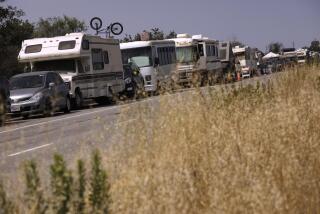One veteran was homeless. Another ran a shelter. Now they live to help homeless people
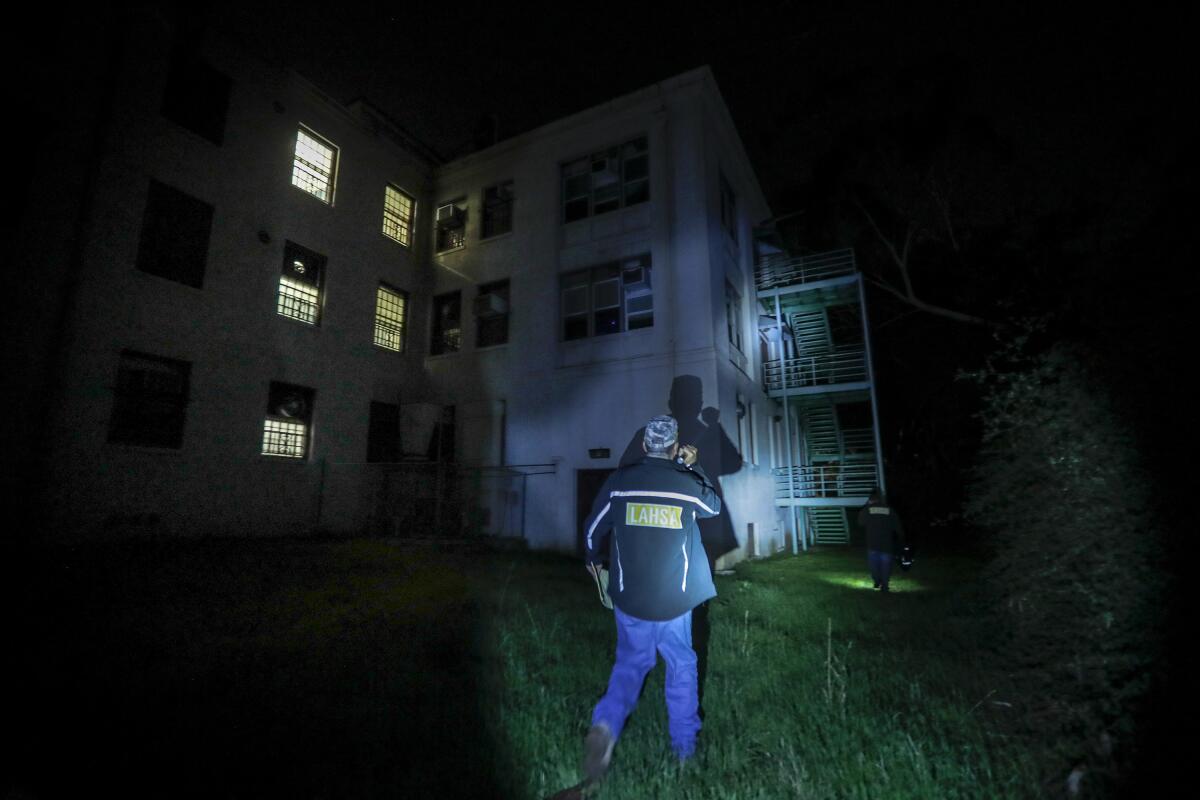
For Dale Wilson, conducting Los Angeles County’s annual homeless count this week was a homecoming of sorts.
Building 257 at the U.S. Department of Veteran Affairs campus in West Los Angeles is where he ended three years of living on the streets, much of it mired in addiction. The Army veteran finally decided that he had spent too many years in jail and too much time apologizing to his son, also an Army veteran.
So Wilson came to this building, which serves as the Veterans Welcome Center, got a shelter bed and got clean. That was almost eight years ago.
Now the 60-year-old, with fading tattoos and a round, friendly smile with a few missing teeth, lives with his wife in an apartment in Bellflower. He is also an outreach worker for the Los Angeles Homeless Services Authority.
He credits the VA with saving his life.

“I’ve been locked up. I’ve got two strikes. I shouldn’t have this job,” Wilson said. “This isn’t even work to me. It’s really not. It’s just giving back. I needed a lot of help to get out of the situation that I was in. I really did.”
The precipitous decline in homelessness among veterans in recent years has served as a rare bright spot for California officials desperately searching for strategies to get people off the streets.
PHOTOS: 2020 Greater Los Angeles Homeless Count
There were 3,878 homeless veterans in Los Angeles in 2019, which was the most in the country. That number is relatively flat compared to 2018 but is down dramatically from 2017.
Unlike most swaths of L.A. County, where more than 7,000 volunteers spread out over three days this week to collect information for the federally mandated homeless count, the one on the VA campus was conducted by social workers and medical professionals from the department, along with LAHSA employees like Wilson.


The count has become a civic exercise in making people more aware of the crisis unfolding on Los Angeles’ streets.
On Wednesday, Wilson and Daniel Ornelas, another LAHSA outreach worker, joined about a dozen people in a small sterile room in Building 257. Dr. Anjani Reddy and Enrique Martinez, both of LAHSA, walked the group through how the night would go.
Reddy split them into five groups of three or four, and told them to canvass the campus’ 388 acres — a labyrinth of buildings, parking lots and even a golf course.
Homeless veterans are known to sleep in their cars, and sometimes find small nooks and crannies amid the buildings to bed down. There’s a safe parking lot that’s mushroomed in size in recent years.
Martinez explained that the groups were just doing a visible count and weren’t expected to engage with the people they saw.
He explained that the count is conducted during the winter because shelters tend to be at capacity, so it’s easier and more accurate to tally the people inside. The count is also done at night because people tend to be on the move during the day. So going out after dark makes more sense.
“Thank you to everyone who has served and thank you for everything you guys do,” Martinez told them.
He then Joined Ornelas and Wilson, and the group set off, sweeping their surroundings with flashlights. They looked for signs of life — trash or holes in a nearby fence.

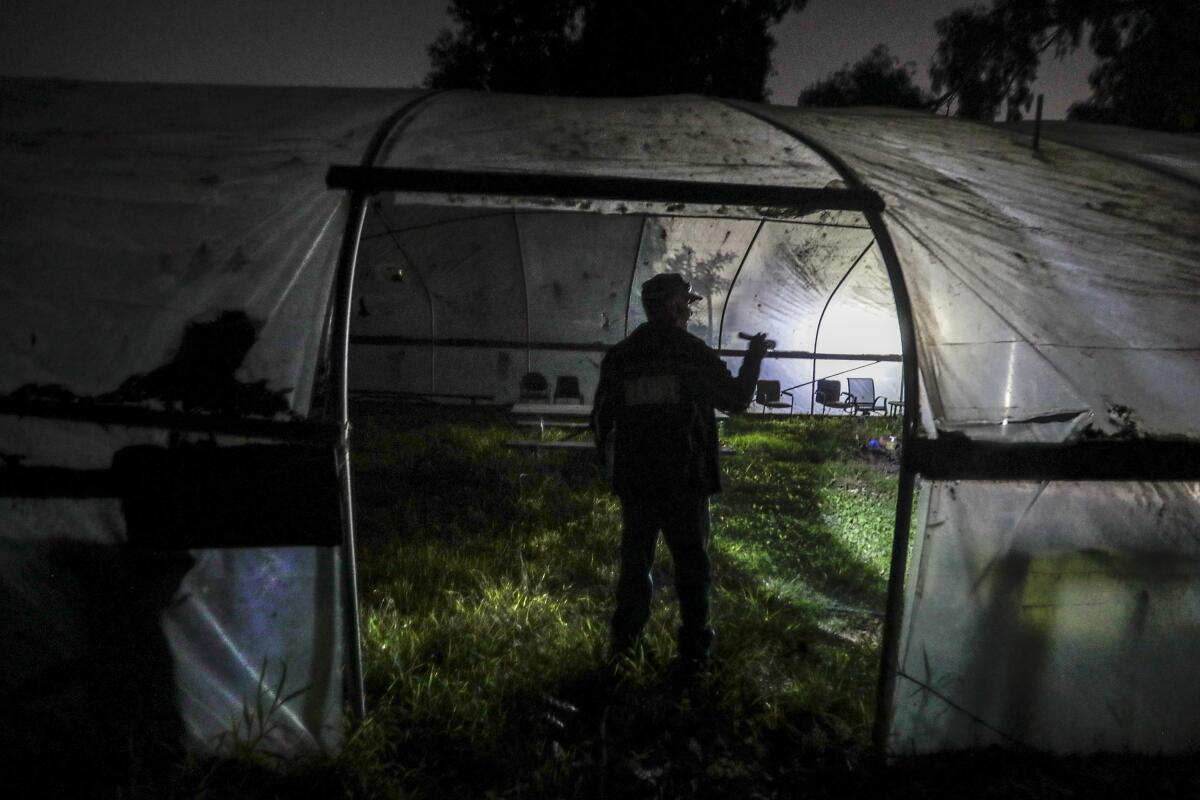
Ornelas, who spent nearly 30 years in the Army, once managed a homeless shelter on skid row.
“Let’s make a big loop,” he said. “Start down by the field and work our way back this way.”
They trudged through the expanse of overgrown hillsides and gardens near Jackie Robinson Stadium, where UCLA’s baseball team plays. The crack of a metal bat echoed from a nearby batting cage.
Ornelas walked with the determined gait of a man who had spent years marching, and Wilson and Martinez sometimes struggled to keep up. After 90 minutes, they returned to where they started.
They didn’t spot any tents or homeless people. But in the parking lot, they counted five RVs that appeared to have people inside. Sometimes it was hard to tell if a homeless person owned the van or camper, or if it was just a vehicle that the VA used to transport patients.
Other groups counted dozens of homeless people and plenty of vehicles that appeared to be inhabited.
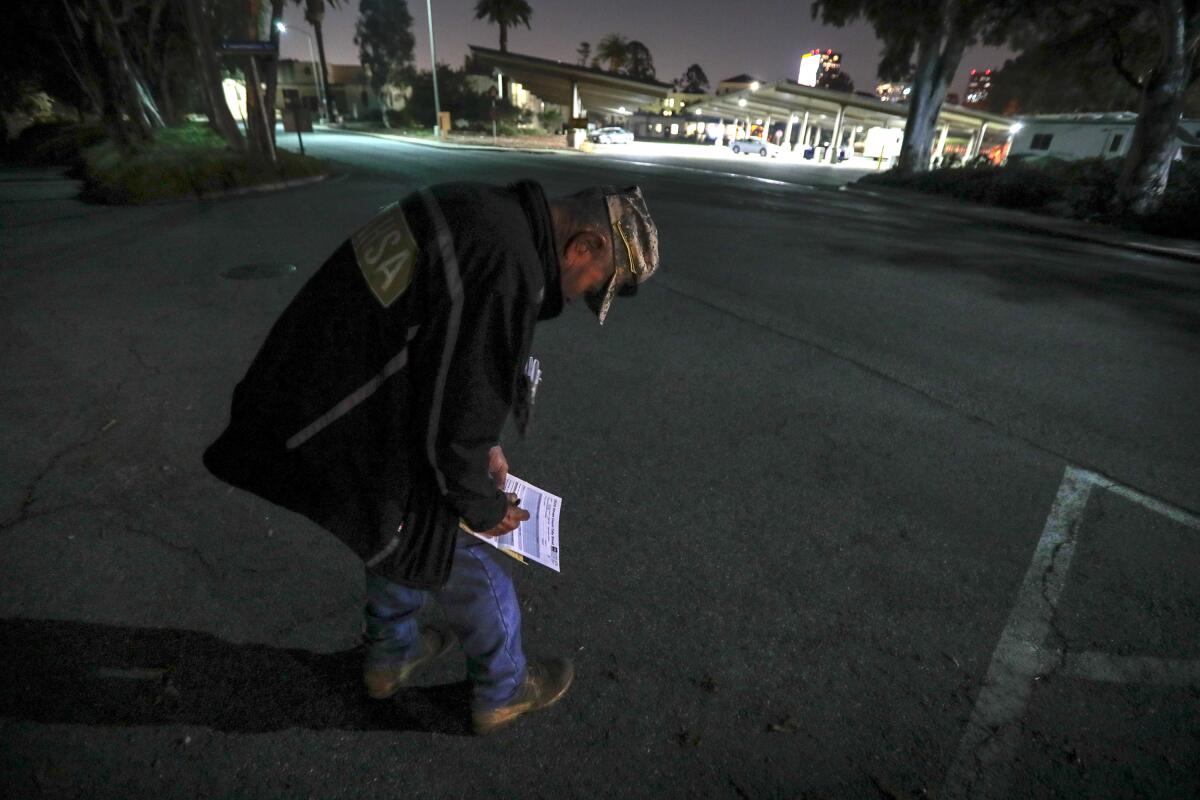
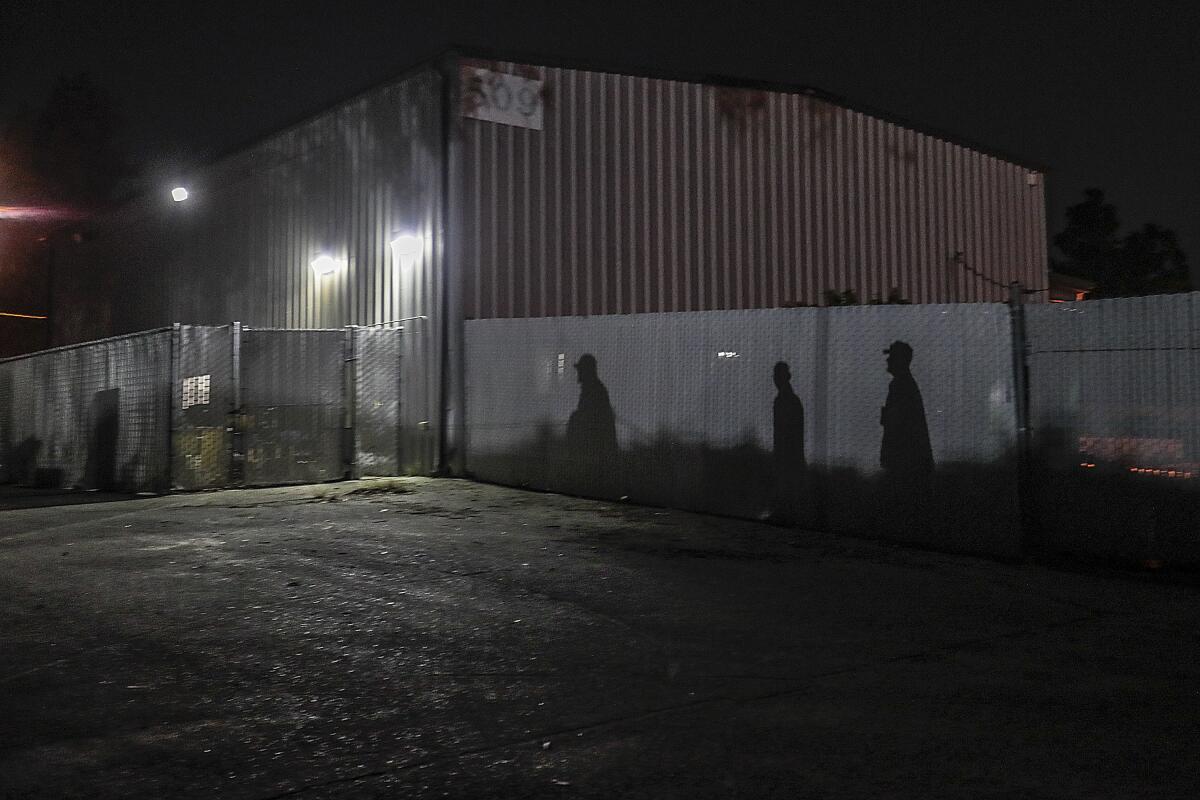
The calculations are always somewhat subjective, but will become part of the county’s estimate of how many people live on the streets and in cars and RVs.
Back at building 257, Ornelas and Wilson slapped the backs of other participants and chatted up the social workers and doctors who had joined in the count but now will go back to their day jobs.
Wilson and Ornelas planned to meet up at 7:30 a.m. the next day so they could head to Zuma Beach to help get some homeless people into housing.
More to Read
Start your day right
Sign up for Essential California for news, features and recommendations from the L.A. Times and beyond in your inbox six days a week.
You may occasionally receive promotional content from the Los Angeles Times.


